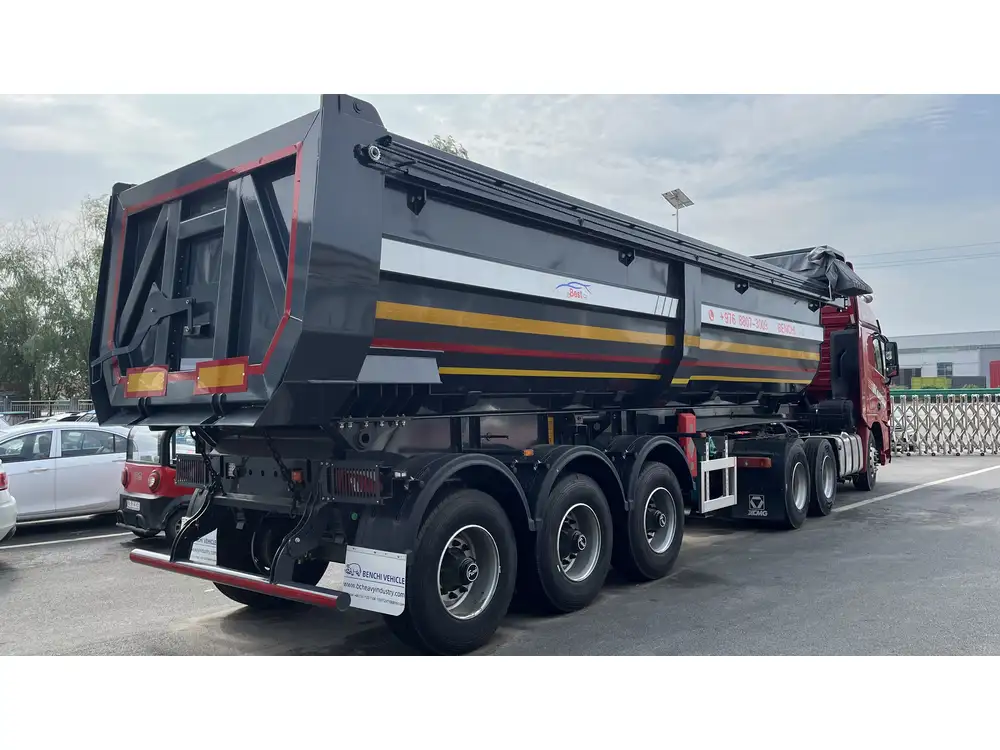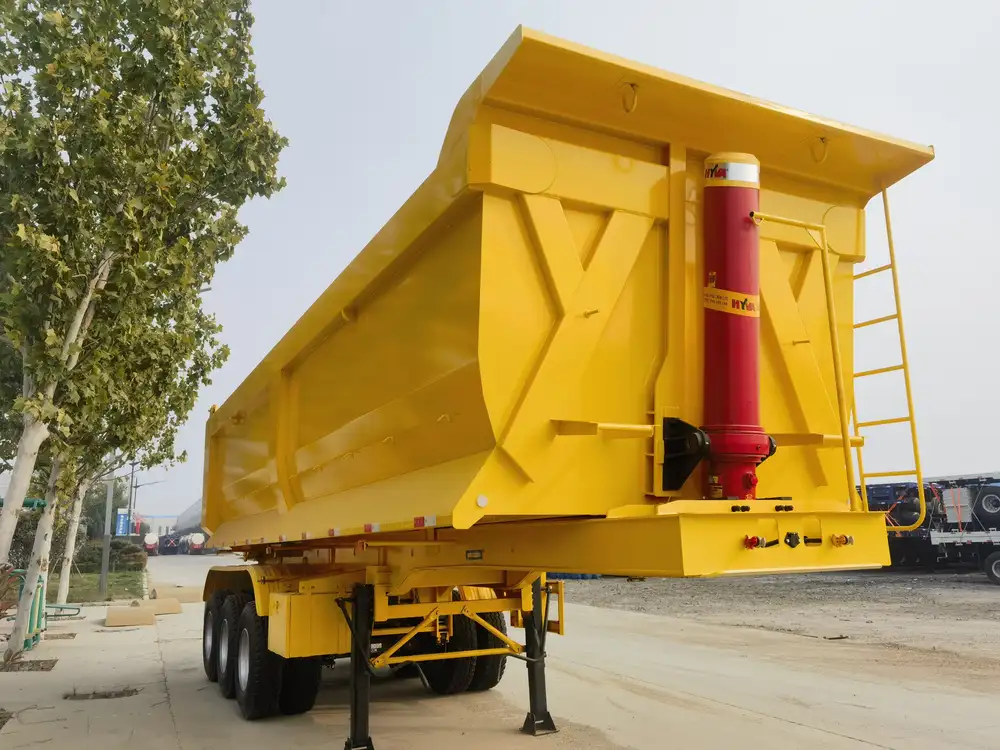When delving into the specification details of semi-trailers and tractor units, one might naturally inquire, “how long is a semi tractor and trailer?” This question, seemingly straightforward, unfolds into a myriad of factors including state regulations, types of trailers, and operational purposes. By understanding these components, we can provide a detailed perspective that serves not only to inform but also to guide potential customers in their decision-making processes.
The Anatomy of a Semi-Truck: Breaking Down Components
To accurately address the question of length, we must first dissect the structure of a semi-truck. A semi-truck (or tractor unit) consists of two primary components: the tractor and the trailer.
1. The Tractor Unit
The tractor, often considered the powerhouse of the vehicle, houses the engine and provides the necessary traction to pull the trailer. The typical length of a tractor unit can range from 17 to 21 feet (5.2 to 6.4 meters). Factors influencing the length include:
- Model and Manufacturer: Different brands such as Freightliner, Peterbilt, or Kenworth offer various models, each with unique dimensions.
- Configuration: Variations in the wheelbase can affect the overall length, with a longer wheelbase generally providing greater stability when towing heavy loads.

2. The Trailer
The trailer constitutes the cargo-carrying component, and its length can vary significantly based on the type of trailer. Common types include:
| Trailer Type | Typical Length | Cargo Type |
|---|---|---|
| Flatbed Trailers | 48 to 53 feet (14.6 to 16.2 meters) | Building materials; machinery |
| Dry Van Trailers | 48 to 53 feet (14.6 to 16.2 meters) | General cargo; pallets |
| Refrigerated Trailers | 53 feet (16.2 meters) | Perishable goods |
| Container Trailers | 20 to 40 feet (6.1 to 12.2 meters) | Shipping containers |
| Lowboy Trailers | 40 to 60 feet (12.2 to 18.3 meters) | Heavy equipment |
Understanding Trailer Variations
Each trailer type serves specific purposes and regulations dictate their maximum lengths. For instance, the Federal Bridge Formula governs how weight is distributed based on the number of axles, thereby influencing the feasible length of trailers on highways.
Calculating the Overall Length of a Semi-Tractor and Trailer
Generally, the total length of a truck-trailer combination can reach up to 75 feet (22.9 meters) in the United States if adhering to federal guidelines. Here’s how we can visualize it:
- Tractor Length: Averages around 20 feet.
- Typical Trailer Length: Coupled with a 53-foot dry van trailer.
Thus, we compute:
[ \text{Total Length} = \text{Tractor Length} + \text{Trailer Length} ] [ \text{Total Length} = 20 \, \text{feet} + 53 \, \text{feet} \Rightarrow 73 \, \text{feet} ]This is a pertinent example, as many operators utilize combinations that remain within legal limits while maximizing load efficiency.

Regulatory Considerations Impacting Length
Understanding the regulatory landscape is crucial when discussing semi-truck and trailer lengths. Different states may have unique rules concerning:
1. Interstate Regulations
The Federal Highway Administration (FHWA) establishes the rules that govern interstate trucking. Here are some key points:
- Maximum length on Interstate highways: Generally, a combination of 75 feet is permissible.
- Width and Height Regulations: Typically, 8.5 feet wide and 13.5 feet high.
2. State-Specific Rules
States have the authority to implement their own regulations, often leading to variability in allowable truck sizes. For example, California permits longer combinations under specific conditions, which may differ from those in Texas or Florida.

Practical Implications for Operators
For operators and fleet managers, the dimensions of semi-trailers and tractors hold significant implications. Here’s why understanding the lengths matter:
Operational Efficiency
- Load Optimization: Knowing the maximum legal dimensions allows operators to optimize load configurations, enabling maximized cargo capacity without breaching regulations.
- Route Planning: Certain routes may have restrictions on vehicle lengths; understanding your vehicle dimensions assists in effective route planning.
Safety Considerations
Safety is paramount in trucking operations. Proper awareness of overall lengths contributes to:
- Maneuverability: Longer combinations may have challenges in urban areas or while making sharp turns.
- Braking Distance: Heavier and longer combinations require longer stopping distances, which can affect operational safety.

Advanced Considerations for Freight Transportation
1. Industry Trends Impacting Lengths
The logistics sector is continually evolving, and several trends may affect the dimensions of semi-trucks and trailers:
- Increased Demand for E-commerce: This has led to a surge in the use of smaller, more maneuverable trucks in metropolitan areas, adjusting the typical tractor and trailer lengths necessary for efficient delivery.
- Sustainability Regulations: As emission regulations become more stringent, companies may explore alternative vehicle configurations that emphasize fuel efficiency over size.
2. Custom Innovations in Trailers
Manufacturers are innovating with customizable trailers to serve niche markets. Some examples include:
- Extendable Trailers: Useful for transporting oversized loads, their lengths can extend to accommodate varying cargo needs.
- Multi-Functional Trailers: Designed to switch between configurations, these provide operational flexibility and efficiency.

Conclusion: The Importance of Knowing Dimensions
Understanding how long a semi tractor and trailer can be involves far more than simply knowing the figures. It encompasses grasping the interaction between regulations, operational needs, and industry trends.
Key Takeaways
- Typical Lengths: The overall length of a semi-trailer combination can average around 73 to 75 feet depending on configurations and trailer types.
- Regulatory Compliance: Operators must remain abreast of interstate and state-specific regulations that determine permissible vehicle lengths.
- Operational Efficiency: Awareness of dimensions aids in enhancing operational efficiency and safety.
In essence, whether you are a manufacturer, operator, or fleet manager, understanding the dimensions and their implications is critical to optimizing logistics, ensuring compliance, and ultimately driving the success of transportation endeavors.



